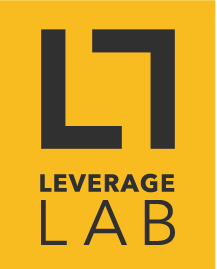Leverage Lab is year long program that facilitates cross-sector collaboration, in order to address shared industry challenges and improve social and environmental impact, productivity, and brand.
After spending 13+ years working with business leaders to improve their practices, we have learned three things:
Businesses can implement real, lasting change that benefits the business, the employees, AND the environment.
Big change requires smart collaboration with the right people under the right circumstances.
The importance of experienced facilitators, the right resources, and systems of accountability in pushing systemic boundaries to change business in a way that benefits everyone.
What sets the Leverage Lab process apart?
Its dedicated facilitator, whose role it is to:
maintain momentum within each Lab from month to month
generate common language around shared problems
conduct research between meetings
develop safe spaces with established ground rules
set an intention to solve common problems over the six-month duration
hold the group accountable to their shared tasks and commitments
Once a lab has completed their six-month cycle, they are brought together with our community partners to share lessons learned, gather feedback, and celebrate their successes.
What participants are saying
““As a business operating within sustainability, I find it can get lonely not having folks to talk with on a regular basis. It would be very useful to have a group like this where we can get into deep discussion and keep things moving, not a one off event or meeting””
““Organizations need venues for collaboration to avoid redundancy and overlap. Focused conversation could be the way to get people on track. Small groups that work under a bigger framework””
WHITE PAPER: UNRAVELLING THE PROBLEM OF APPAREL WASTE IN THE GREATER VANCOUVER AREA
Abstract
This report takes the first step towards the transition from a linear to a circular apparel system by defining the problem of apparel waste, explaining the existing system of apparel waste generation and management in the greater Vancouver area, and presenting key opportunities that need to be realized by the industry, waste management and government stakeholders in order to make the transition to circular fashion. The report details that while there is an existing system to manage apparel waste, it is not circular and it doesn’t capture all the waste that is created. To move the industry forward, we need to innovate and find ways to capture more material. And ultimately, we need to move from a linear to a circular system—to “circular fashion.”







